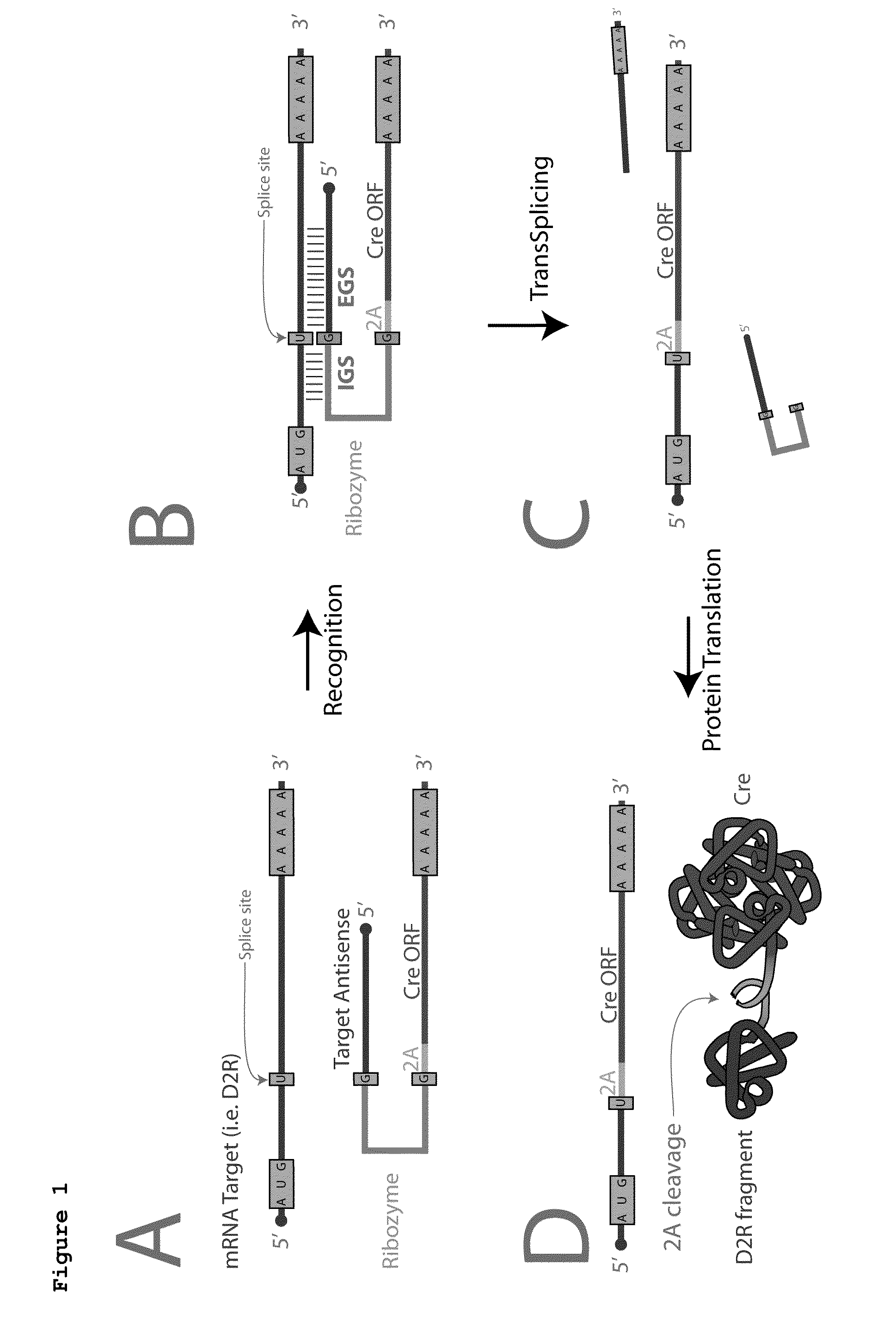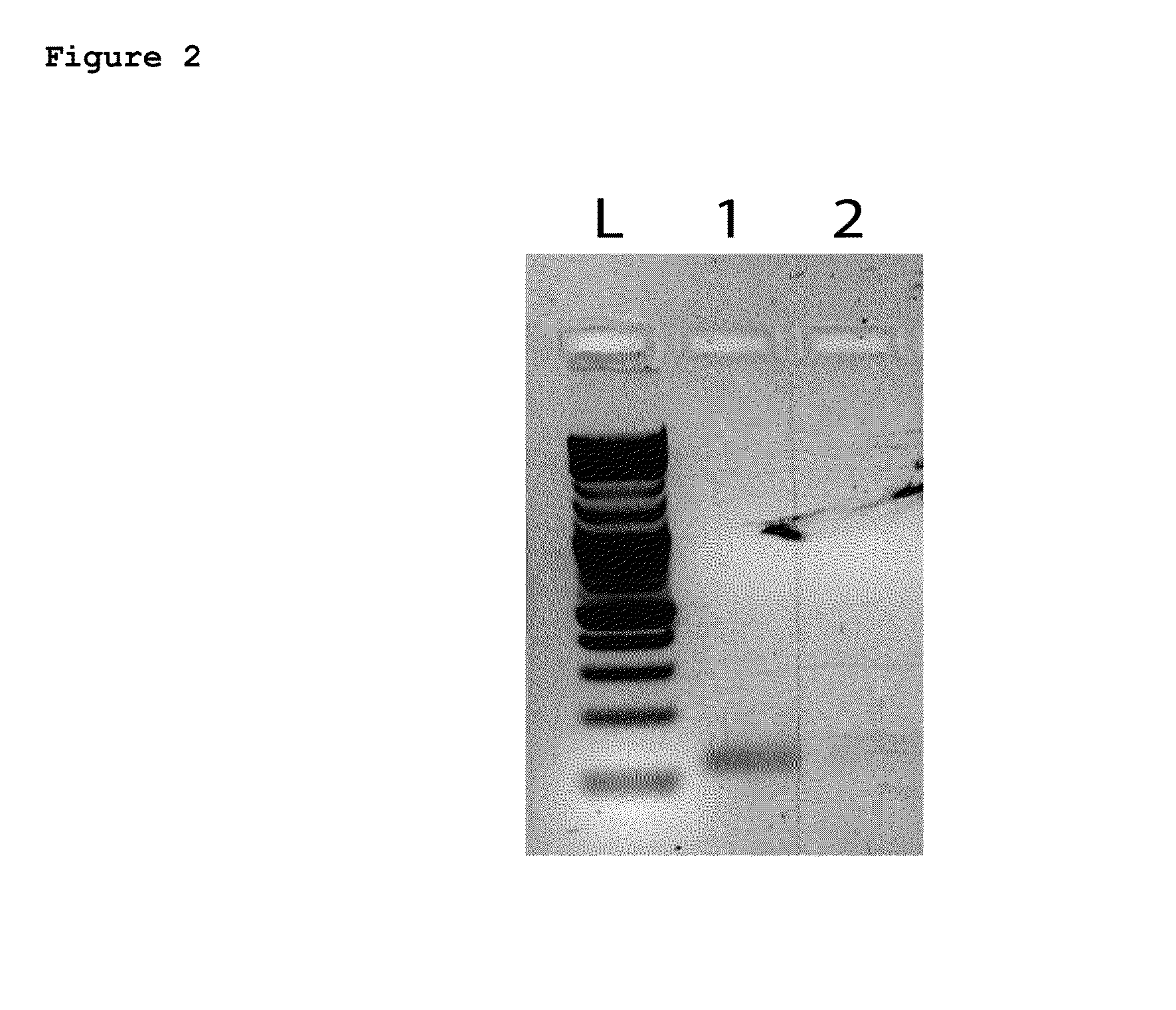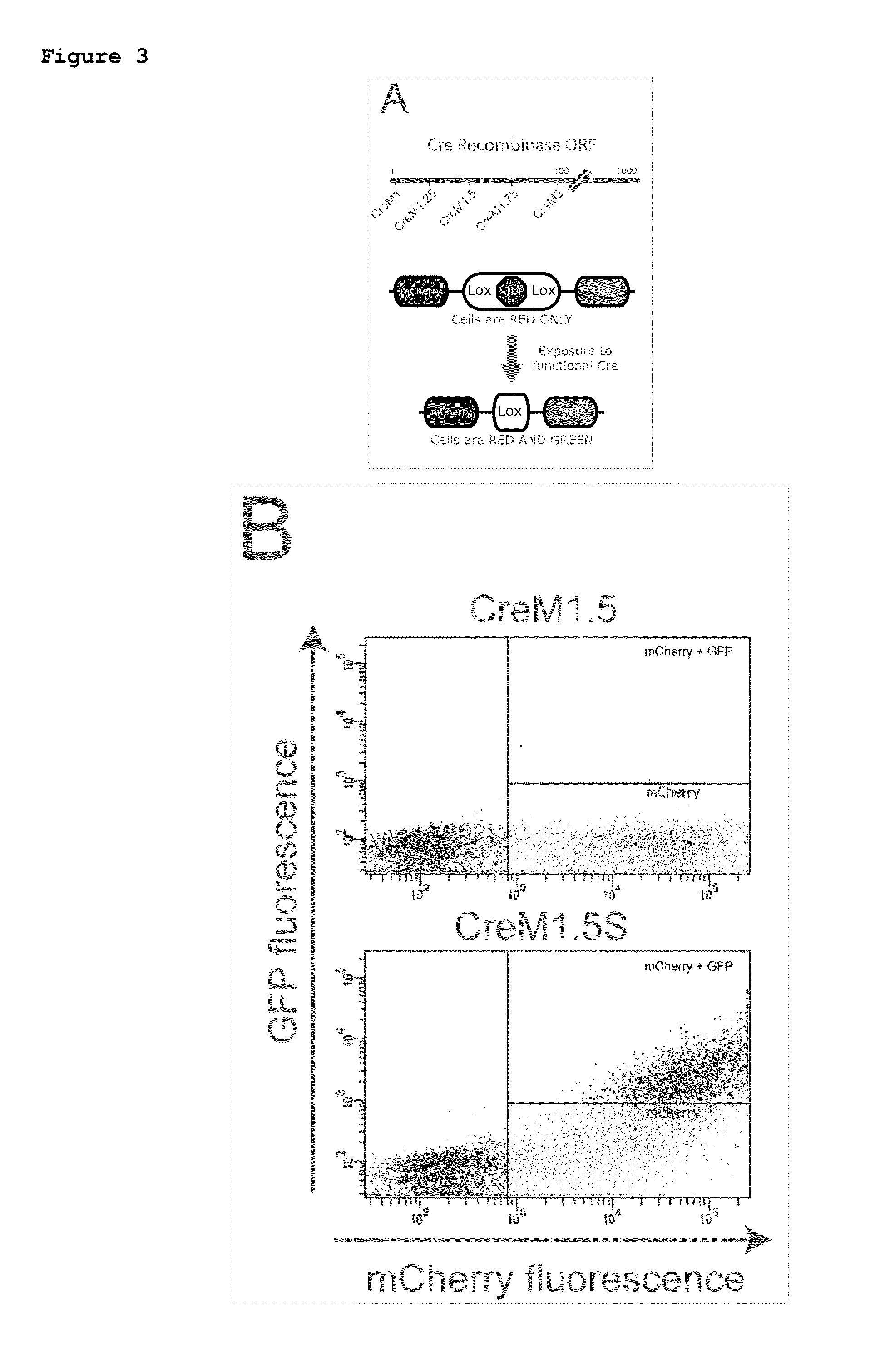Trans-splicing ribozymes and silent recombinases
a technology of ribozyme and ribozyme, which is applied in the field of transsplicing ribozyme and silent recombinases, can solve the problems of large promoters, poorly understood rules governing mammalian gene expression,
- Summary
- Abstract
- Description
- Claims
- Application Information
AI Technical Summary
Benefits of technology
Problems solved by technology
Method used
Image
Examples
example 1
Trans-Splicing Ribosymes
Strategy for Achieving Specific Recombinase Expression
[0265]FIG. 1 summarizes an exemplary strategy for using ribozyme-mediated trans-splicing to couple an mRNA encoding Cre into the mRNA of an endogenous target gene such as the D2R receptor. (In what follows Cre is used as an example; the approach is exactly analogous for other recombinases, such as FLP).
[0266]To limit expression specifically to D2R expressing neurons, the IGS and EGS sequences are engineered to target complementary sequences in the mRNA encoding the D2R transcript. The engineered ribozyme contains all of the necessary coding sequence of Cre, but is missing a translational start codon. In the absence of its target the ribozyme is expressed but not translated; only upon trans-splicing into the appropriate target does it acquire the start codon necessary for translation. The resultant transcript includes a portion of the target gene, but this is co-translationally cleaved at a virally-derived ...
example 2
Silent Cre Recombinase
[0268]CreM (CreM1, Cre1.25, CreM1.5, or CreM1.75) plasmid was co-transfected into HEK293 cells with a reporter plasmid the constitutively expresses mCherry and that expresses GFP in a Cre-dependent fashion (FIG. 3A). Cells were incubated for 48 hrs at 37° C. and then harvested for flow cytometry analysis (an example of which is shown in FIG. 3B). Cells which expressed mCherry (positive for transfection) were further assayed for GPP expression. CreM1 is functional without a start codon. CreM2 shows little activity with or without a start codon. CreM1.25, CreM1.5, and CreM1.75 showed the desired activity pattern; recombination is detected only when a start codon is provided.
example 3
General Method for Targeting Genes to Specific Nearonal Subtypes in Mammals
[0269]The ability to manipulate gene expression in genetically defined neuronal subtypes provides a powerful tool for dissecting neural circuits. A general method for achieving cell-type specific expression in the mammalian nervous system would represent an important advance. The ideal approach to achieving cell-type specific expression would combine the specificity of knock-in transgenics with the convenience of viral delivery and would open the door to cell-type specific expression of transgenes in many model organisms (namely rats and primates). Such a technique is developed based on ribozyme (catalytic RNA) mediated RNA trans-splicing (joining of two separate mRNA transcripts).
[0270]The group I intron from Tetrahymena thermophila is a catalytic RNA (or ribozyme) with the remarkable ability to perform a cleavage-ligation reaction in the absence of proteins. Though its normal activity is to splice itself ou...
PUM
| Property | Measurement | Unit |
|---|---|---|
| Catalyst | aaaaa | aaaaa |
Abstract
Description
Claims
Application Information
 Login to View More
Login to View More - R&D
- Intellectual Property
- Life Sciences
- Materials
- Tech Scout
- Unparalleled Data Quality
- Higher Quality Content
- 60% Fewer Hallucinations
Browse by: Latest US Patents, China's latest patents, Technical Efficacy Thesaurus, Application Domain, Technology Topic, Popular Technical Reports.
© 2025 PatSnap. All rights reserved.Legal|Privacy policy|Modern Slavery Act Transparency Statement|Sitemap|About US| Contact US: help@patsnap.com



